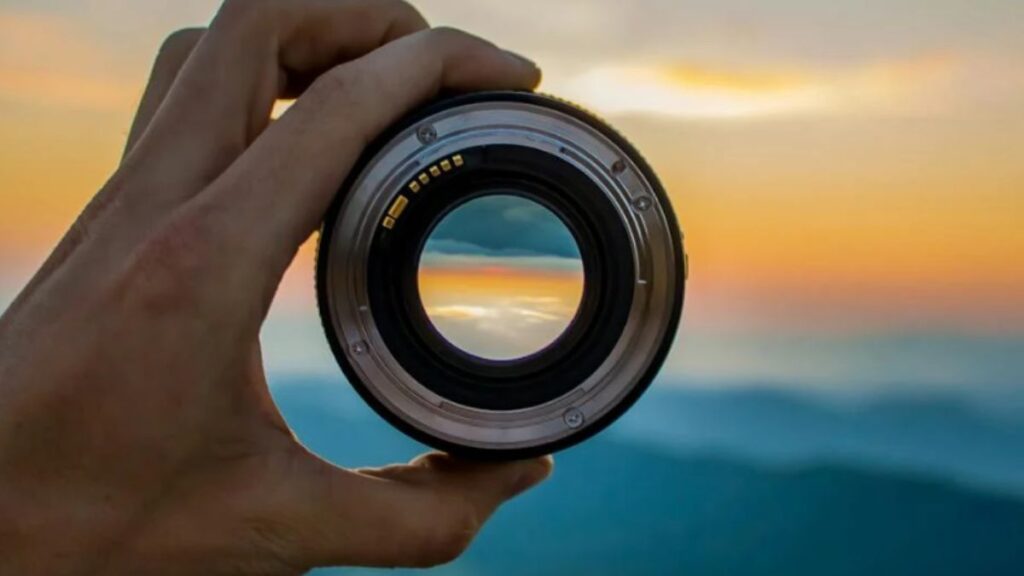Photeeq lens flare isn’t just another filter buried in the endless sea of photo-editing effects. It’s a beacon of aesthetic possibility, a stylistic manifesto that transforms ordinary shots into cinematic marvels. In this deep dive, we’ll explore everything you need to know about photeeq lens flare—from its technical underpinnings and historical roots to advanced creative hacks and real-world inspiration. Strap in: SPARKLE’s about to illuminate your workflow with punchy insights, Guardian-level analysis, and GQ-grade swagger.
1. Bright Beginnings: What Is Photeeq Lens Flare?
At its core, a lens flare is an optical phenomenon. When light bounces around inside your camera lens (or in digital simulations), it creates streaks, rings, and orbs of light that bleed into your frame. Traditionally, photographers tried to minimize this effect, considering it a “flaw.” But pioneering creators embraced it as art—hence the rise of photeeq lens flare as a sought-after visual flourish.
Photeeq lens flare brings that cinematic glow directly into your editing suite. It’s more than a simple overlay; it’s an adaptive, physics-inspired effect that responds to your light sources, camera angle, and even your subject’s movements.
2. From Accident to Icon: A Brief History
Lens flares started as undesirable byproducts of early photographic lenses in the 19th century. Yet by the late 20th century, filmmakers from Stanley Kubrick to George Lucas reframed them as narrative devices—flashes of the uncanny, bursts of cosmic wonder.
-
Lucas’s Star Wars (1977): One of the most famous uses, where aggressive lens flares underscored the futuristic setting.
-
Kubrick’s 2001: A Space Odyssey (1968): Subtle flares punctuated monolithic imagery, hinting at transcendence.
Enter digital editing and plugins like photeeq lens flare. What once required expensive anamorphic glass can now be dialed in with precision: controlling hue, intensity, angle, and even the number of “ghost” reflections.
3. Anatomy of a Photeeq Lens Flare
To wield photeeq lens flare effectively, you need to understand its components:
| Component | Description |
|---|---|
| Core Glow | The brightest spot where your simulated light hits, often tinted to match ambient colors. |
| Ghost Rings | Secondary reflections—small, shape-specific orbs that trail away from the core glow. |
| Streaks/Beams | Sharp, linear flares that slice across your frame, adding dynamism and drama. |
| Halo Bloom | Diffuse glow spreading backward from the light source, imparting atmosphere and depth. |
| Chromatic Tint | Subtle color shifts within the flare, often programmable in RGB channels for stylized effects. |
Every element is adjustable in the photeeq lens flare interface, giving you the power to move from hyper-real sci-fi to dreamy retro nostalgia with a single slider.
4. Installing & Integrating Photeeq Lens Flare
Getting photeeq lens flare into your arsenal is straightforward:
-
Download & License
-
Visit the official Photeeq website.
-
Choose your plan: Indie, Pro, or Studio. Each tier unlocks additional presets and higher-resolution rendering.
-
-
Plugin Installation
-
For Adobe Photoshop/After Effects: Place the
.aexor.pluginfile in your Plugins folder. -
For DaVinci Resolve/Premiere Pro: Use the built-in “Install Plugin” wizard.
-
-
Launch & Activate
-
Open your host application.
-
Navigate to
Effects → Photeeq → Lens Flare. -
Enter your license key when prompted.
-
-
Workflow Integration
-
Create an adjustment layer (Photoshop) or an effects layer (video editors).
-
Apply photeeq lens flare and start tweaking presets or custom parameters.
-
5. Preset Power: Quick-Start Cinematic Looks
Photeeq lens flare ships with a suite of hand-crafted presets—each one a flavor of classic cinema or contemporary cool. Here are a few standout options:
| Preset Name | Vibe | Use Case |
|---|---|---|
| Solaris Burst | Sci-fi epic | Space renders, futuristic sequences |
| Golden Hour | Warm nostalgia | Portraits, outdoor lifestyle shots |
| Neon Drift | Urban cyberpunk | Nightlife, club scenes, street photography |
| Retro Lens | 1970s film vibe | Music videos, indie film projects |
| Subtle Whisper | Dreamy, understated ambient | Wedding videos, soft-focus photography |
Selecting a preset is just the jump-off point. Dial up the intensity, skew the color wheel, or animate your flare for shifting, breathing light that interacts with your footage.
6. Manual Mastery: Advanced Controls Explained
If you crave total control, dive into these parameters:
-
Angle & Rotation: Position your flare relative to the frame. Perfect for matching the sun’s real trajectory in a timelapse.
-
Emission Strength: From ghostly whispers to blinding bursts—set the core brightness and watch your scene transform.
-
Spectral Spread: Tweak the chromatic aberration for that extra pop of neon or a subtle prism effect.
-
Ghost Count & Spacing: More or fewer reflections, packed tight or spread apart—ideal for stylized montages.
-
Lens Mask Shape: Rectangle, hexagon, even custom vector shapes to simulate exotic lenses.
Use keyframes to animate these settings over time: imagine a sunrise sequence where the photeeq lens flare evolves from a faint bloom to a brilliant flurry of beams.
7. Creative Hacks & Industry Secrets
True SPARKLE gold lives in the unconventional:
-
Double Exposure Flare: Stack two photeeq lens flare effects with different colors—say, orange for dawn and teal for shadows—to create a haunting duality.
-
Mask-Driven Flares: Paint a custom mask so the flare only appears behind your subject, simulating a rim-light effect without extra lighting gear.
-
Texture Integration: Blend your flare layer with real film grain or dust overlays, then set blending mode to Screen for authentic analog grit.
-
Interactive UI Design: Use photeeq lens flare in web mockups—flaring logo intros, button hover states, and dynamic scroll triggers for an immersive digital interface.
These tricks leverage the plugin beyond mere decoration, embedding photeeq lens flare into the narrative and functional fabric of your project.
8. Tutorials & Step-by-Step Guides
8.1. Photographic Portrait Glow
-
Open your portrait in Photoshop.
-
Add a Levels adjustment layer—crank the highlights slightly.
-
Create a new blank layer.
-
Apply photeeq lens flare at low intensity (Emission Strength ~ 10%).
-
Position the core glow behind the subject’s shoulder.
-
Mask out areas over the face to avoid unnatural shining.
-
Lower the layer opacity to taste (~60%).
Result: A subtle, cinematic rim light that separates your subject from the background, all in post-production.
8.2. Dynamic Cinematic Title Sequence
-
In After Effects, create a new composition.
-
Add your background footage or gradient.
-
Place your title text on its own layer—choose a bold, sans-serif font.
-
Precompose the text layer.
-
On the precomposition, apply photeeq lens flare.
-
Animate the flare’s Angle from 0° to 360° over 3 seconds.
-
Set blending mode to Add.
-
Back in the main comp, add a slight Glow effect for extra shine.
The result is a rolling flare that “paints” your title in light, perfect for trailers or brand promos.
9. Real-World Case Studies
9.1. Indie Film “Urban Pulse”
Director Sofia Gutiérrez used photeeq lens flare to imitate the neon-soaked streets of Tokyo—without the budget for overseas shooting. By layering different presets and animating their parameters, she created a vibrant metropolis straight out of cyberpunk lore.
9.2. Fashion Editorials for “Mode Moderne”
Photographer Liam Vos flaunted photeeq lens flare across luxury shoots in Milan, contrasting sharp couture silhouettes with dreamlike flares. The effect added a sense of ephemeral glamour, making every image feel like a moment suspended in time.
10. Best Practices & Pitfalls to Avoid
-
Don’t Overflare: It’s tempting to crank up the brightness, but too much flare flattens detail and distracts your audience.
-
Match Your Scene: Always sample dominant colors in your shot. A cold, blue‐tinted evening scene clashes with a 5,500K warm glow.
-
Consider Grain & Noise: High-ISO footage can amplify artifacts when you layer bright flares—apply a gentle denoise filter first.
-
Keep Context in Mind: A sci-fi action piece welcomes bold photeeq lens flare. A documentary might call for a more reserved, contextual use.
11. Troubleshooting Common Issues
| Issue | Solution |
|---|---|
| Flare Clip at Frame Edges | Increase the mask’s feather or extend the flare’s bloom radius. |
| Pinned Flare (Not Moving) | Animate the Angle or Anchor Point to sync with camera motion. |
| Color Banding in Gradients | Add 1–2% noise post‐render or enable 16-bit/32-bit color depth. |
| Slow Render Times | Lower Ghost Count, disable Bloom temporarily during draft renders. |
12. Looking Ahead: The Future of Digital Flares
As neural‐rendering algorithms and GPU‐accelerated ray tracing evolve, expect photeeq lens flare to embrace AI‐driven auto‐matching. Imagine flares that analyze your shot’s lighting in real time and suggest bespoke presets—or even generate new lens shapes on the fly, inspired by your content’s mood.
We’re moving toward a world where light itself becomes interactive data—responsive, adaptive, and context‐aware. Photeeq lens flare sits at the forefront of that revolution, turning every click of your shutter into a narrative moment.
13. Conclusion: Ignite Your Vision
Photeeq lens flare isn’t just an effect—it’s an invitation to reimagine how light interacts with your storytelling. Whether you’re crafting cinematic epics, shooting intimate portraits, or designing dynamic UI experiences, this plugin empowers you to paint with photons.
Pull back the veil on your next project. Dial up the intensity, tweak those spectral shifts, and let your scenes shine with that trademark photeeq lens flare brilliance. After all, creativity thrives in the glow of daring experimentation.
Now go forth—flare it up.






